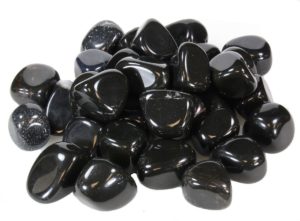Uncategorized
EseRocca introducing the onyx gemstone
introduction and history of the onyx gemstone
Onyx is black and white banded agate. It is often confused with the onyx marble, but in fact it is a limestone. Some varieties of onyx differ in colour, such as sard onyx, which has a brown base and white upper layer. Cornelian onyx, which has a red base and white upper layer. And niccolo onyx, which has a very thin upper layer, allowing the black base colour to show through as grey or blue. Onyx takes its name from the Greek word “onux”, which means fingernail. This could be due to a Greek legend, in which Eros cut the fingernails of Aphrodite with an arrowhead whilst she slept, and the gods turned the clippings into stone. Onyx was cut and carved as a gemstone by the Ancient Greeks and Romans in cameos. Intaglio etchings (negative relief engravings) were also made from onyx. These carvings showcase the banding of onyx.
origin and healing powers of onyx
Onyx deposits are found in countries all over the world that’s why onyx is a known gemstone and the reason why we use it. It can be found in countries including Argentina, Australia, Brazil, India, Botswana and Madagascar. It can also be found in Mexico, Myanmar ,Pakistan, Sri Lanka, Uruguay and the USA. Black onyx is thought to have protective properties and to bring inner strength, self-confidence and mental discipline to its wearer. Additionally, onyx is said to help to release negative emotions and alleviate fear and anxiety. Physically, onyx is believed to help in wound healing, childbirth, eye and ear problems and to benefit the skin, hair, teeth and nails. Onyx is the birthstone for the zodiacal sign of Leo and the seventh wedding anniversary gemstone. Like many gemstones, some cultures believe onyx to be unlucky, but others consider it to be virtuous and to protect against black magic.

